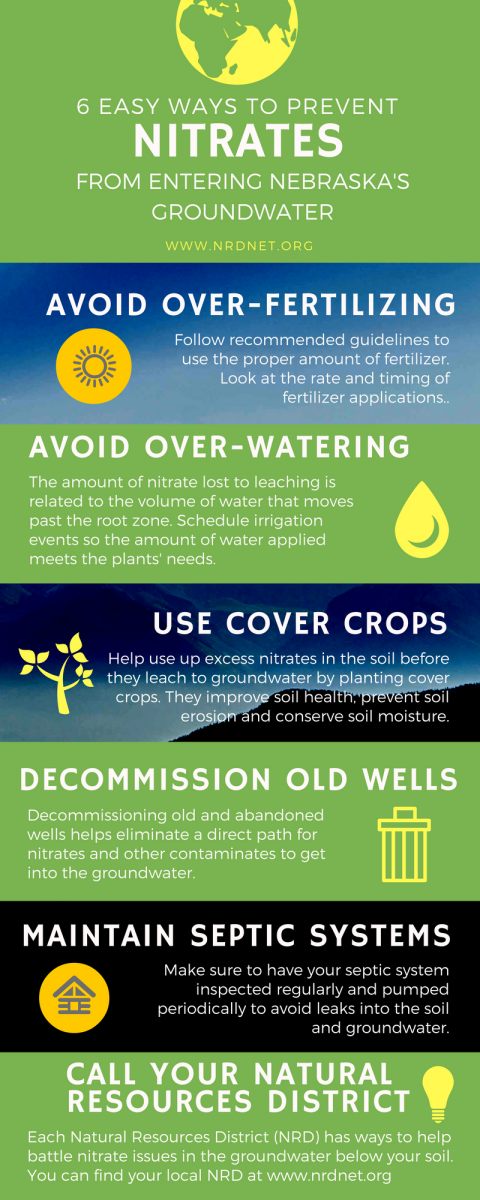Water Resources > Chemigation | Flood Control | Flow Meters | Monitoring Programs | Irrigated Acre Certification | New Irrigation Development | NeRAIN | Surface Water | Rural Water Systems | Groundwater Management | Water Studies | Well Sealing | Wellhead Protection Program
Groundwater Monitoring Programs
The LENRD monitors the groundwater across the 15-county district. Here you will find information about the data that has been collected from the monitoring program.
Groundwater Levels
In order to better protect our water resources, the Lower Elkhorn NRD measures roughly 250 wells scattered across 13 counties of our district. Many of these wells have been measured each spring since 1976. These groundwater level measurements help the District understand how groundwater levels change over time.
Nitrates:
What are they?
Nitrate (NO 3) is a compound of nitrogen and oxygen found in nature and in the foods we eat and the water we drink. Low levels of nitrates may occur naturally in water. However, sometimes higher levels, which are potentially dangerous to infants and pregnant women, are found. The drinking water standard for nitrate is 10 milligrams per liter (10 mg/L) as N (nitrogen), under the Safe Drinking Water Act. This standard is mandatory for public water supplies and is also used as a guide for private wells.
What are the sources of high nitrates?
It is sometimes difficult to pinpoint sources of nitrates because it can infiltrate drinking water in many ways. Some possibilities may include: runoff from fertilized land, municipal and industrial waste water, animal feedlots, septic tanks and private sewage disposal systems, urban drainage, decaying plant debris, and refuse dumps. Geologic formations and direction of groundwater flow may also influence nitrate concentration.
Why are they harmful?
High nitrate levels in drinking water pose a health risk to infants because it may cause methemologlobinemia or “blue baby syndrome.” Nitrate becomes toxic when it is reduced to nitrite, a process that can occur in the stomach as well as in the saliva. Infants younger than 6 months of age are most susceptible because their stomach juices are less acidic and therefore are conducive to the growth of nitrate-reducing bacteria. Nitrite in the blood combines with hemoglobin to form methemoglobin, which reduces the capability of the blood to carry oxygen to all parts of the body. This results in the “blue” condition of the baby’s skin. Pregnant women, adults with low amounts of stomach acidity, or adults deficient in the methemoglobin reductase enzyme (which converts methemoglobin to hemoglobin) are also at risk. In all cases where drinking water contains more than 10 mg/L of nitrate as nitrogen, an alternative source of water should be found for those most susceptible.
What can we do?
The construction and location of drinking water wells is very important in preventing nitrate contamination. New wells should be located at least 100 feet away from potential contaminant sources such as feedlots, septic systems, or chemical storage facilities.
Federal and state regulations require the testing of public water systems for nitrates; however, high nitrate concentrations can occur in private water wells. To arrange for a nitrate and bacteria analyses of your drinking water or if you have questions concerning safe drinking water, contact your local health department or your local Natural Resources District for more information.

